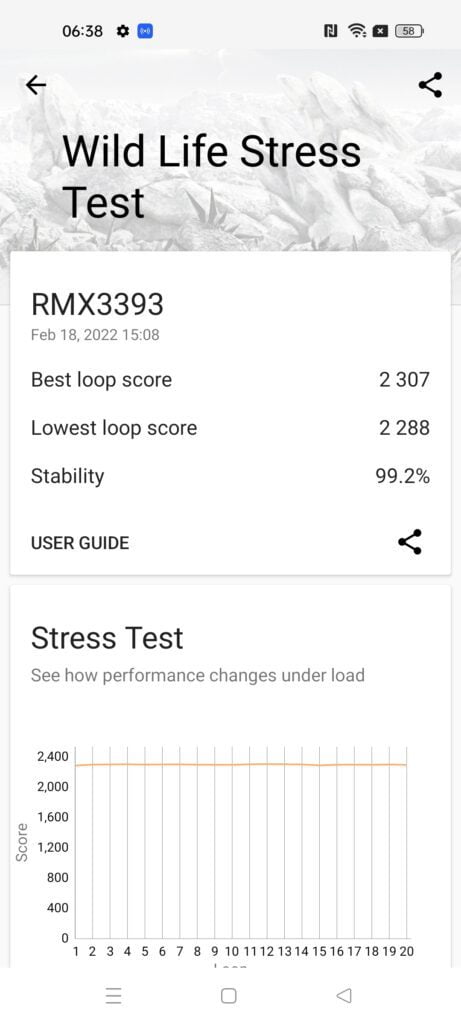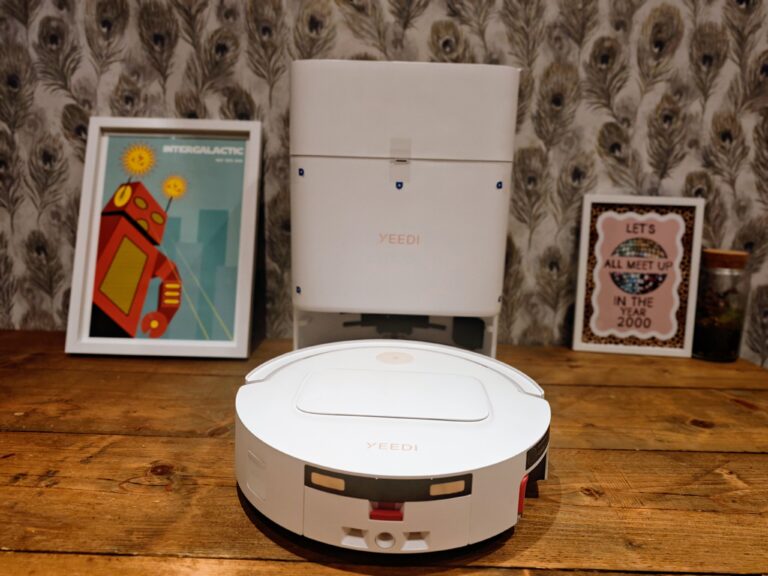Any links to online stores should be assumed to be affiliates. The company or PR agency provides all or most review samples. They have no control over my content, and I provide my honest opinion.
The Realme 9 Pro+ launched earlier this week, being the first phone to feature the MediaTek Dimensity 920.
Thanks to the new Dimensity chipset, the phone is a big improvement from the Realme 8 Pro. It also switches out the camera from the already excellent 108MP Samsung HM2 to the even better 50MP Sony IMX766.
The overall specification is suspiciously similar to the outstanding OnePlus Nord 2 that launched last year. The OnePlus Nord 2 has an RRP of £399 but is currently available for just £350 for the 8GB/128GB model. The Realme 9 Pro+ launches at £350 with an 8 GB + 256GBs storage variant and will be available with £50 on the day of launch, the 4th of March 2022.
With much of the specification the same, how much difference is there between the Dimensity 920 and Dimensity 1200?
For an added bonus, I also recently reviewed the Infinix ZERO 5G, so we can see how much difference there is between standard Dimensity 900. In this case, the results are quite striking. We don’t see the expected performance differences and instead see the differences between how brands cool and tune their phones.
I have also added a few other benchmarks to give an idea of how the MediaTek Dimensity 920 compares to Qualcomm chipsets.
One notable chipset is the Snapdragon 778G which is used on the Realme GT Master Edition. This phone is priced about the same as the Realme 9 Pro+, and the below benchmarks show it performing a bit better, but the overall camera specification is not as good.
MediaTek Dimensity 920 vs Dimensity 1200 vs Dimensity 900 Specifications
| MediaTek Dimensity 920 | MediaTek Dimensity 1200 | MediaTek Dimensity 900 | |
|---|---|---|---|
| Fabrication Process | 6nm, TSMC | 6nm, TSMC | 6nm, TSMC |
| CPU | 2 ARM Cortex-A78@2.5GHz 6 ARM Cortex-A55@2.0GHz | 1 ARM Cortex-A78@3.00GHz 3 ARM Cortex-A78@2.60GHz 4 ARM Cortex-A55@2.00GHz | 2 ARM Cortex-A78@2.6GHz 6 ARM Cortex-A55@2.0GHz |
| GPU | Mali-G68 MC4 950 MHz | ARM Mali-G77 MC9 850 MHz | Mali-G68 MC4 900 MHz |
As we can see from the specification, the Dimensity 1200 has a massive advantage being a flagship chipset that traded blows with the likes of the Snapdragon 888 from last year.
There is not much of a difference between the Dimensity 900, but every little helps.
MediaTek Dimensity 920 vs Dimensity 1200 vs Dimensity 900 Benchmarks





Antutu V9
- Snapdragon 870: 680663
- MediaTek Dimensity 1200-AI: 535652
- Snapdragon 778G: 519947
- Dimensity 900: 477773
- Dimensity 920: 461982
These results may appear to show a discrepancy. There is no way the Dimensity 900 is better than the Dimensity 920. But this is perhaps a good indication of how different phones behave in different ways. Phones will vary the performance based on the app; this is perfectly normal. One argument here is that the Infinix ZERO 5G is tuned more aggressively in general, and it may sacrifice battery in favour of performance. A more sceptical point of view could be that it is tuned specifically for certain benchmarks overinflating the results compared to what you would experience in the real world. In this case, the Infinix ZERO 5G increased in temperature 6.6 degrees going from 20.2 degrees C to 26.8 degrees C. The Realme only increased 4 degrees C, this would imply that Infinix didn’t throttle as much as the Realme, but it is unknown if it behaves like this just for benchmarks or for any app in identifies as needed extra power.
Overall, it is a good example of how benchmarking apps can be potentially misleading when it comes to overall performance.
3DMark Wildlife

- Snapdragon 870: 4256 High, 4220 Low, 99.2% stability
- MediaTek Dimensity 1200-AI: 4161 High, 2932 Low, 70.5% stability
- Snapdragon 860: 3428 High, 3405 Low, 99.2% stability
- Snapdragon 778G: 2497 High, 2477 Low, 99.2% stability
- Dimensity 920: 2307 High, 2288 Low, 99.2% stability
- Dimensity 900: 2005 High, 1973 Low, 98.4% stability
The Dimensity 920 is well behind the Dimensity 1200, and it falls slightly short of the SD778G.
Again, interesting results in comparison to the Dimensity 900. There is a significant performance advantage for the Realme this time. In this case, the Infinix goes from 19 °C to 30 °C while the Realme goes from 21 °C to just 26 °C. This could again imply that Infinix are willing to sacrifice battery in favour of performance, but in this case, it would appear that the cooling solution for the chipset can’t match the quality of the Realme.
Geekbench
- Snapdragon 870: 985/3143
- MediaTek Dimensity 1200-AI: 826/2599
- Snapdragon 860: 731/2711
- Snapdragon 778G: 789/2930
- Dimensity 920: 815/2265
- Dimensity 900: 706/2201
Geekbench is the only benchmark where we see the results as you’d expect. For single-core performance, the Dimensity 920 is outstanding and not too shabby for its multi-core.
PCMark 2.0

- Snapdragon 870: 11762
- Dimensity 900: 11603
- Dimensity 920: 10590
- Snapdragon 778G: 9195
- Snapdragon 860: 8979
- MediaTek Dimensity 1200-AI: 8415
- Snapdragon 765G: 7757
And here were see what a completely shambles PCMark is when trying to compared chipset performance.
The only thing we see here is how a specific vendor optimises the phones for certain scenarios. Again, it is unknown if the is specific tuning for the benchmark itself or aggressive tuning for all scenarios.
For both the Realme and Infinix, we see that the CPU gets locked at maximum clocks. In the past, I thought this was standard practice for all MediaTek chipsets, but it seems to be vendor-specific, if not phone specific.
The Snapdragon 870 on the ZTE Axon 30 also locked the frequencies at 100%. However, the OnePlus Nord 2 massively reduced its clocks, and it, therefore, comes as no surprise that the OnePlus Nord 2 also scored one of the highest times in the PCMark Work 3.0 Battery Life.
The Realme GT Master also kept its clocks low, and it then went on to crush the Nord 2 with an incredible 14h 2 mins PCMark Work 3.0 Battery Life.
Overall
The biggest takeaway from this post is how much difference there can be from two similar chipsets used on two different phones.
This could either be a sign of how inaccurate benchmarks are or perhaps how much better Realme is at making phones that Infinix. It is worth noting that the Infinix is likely quite a bit cheaper than the Realme 9 Pro+, so I think we forgive It for not being quite as good.
The Dimensity 920 is obviously a long way behind the Dimensity 1200 in performance. We didn’t really need the benchmarks to prove that. However, the Dimensity 920 is no slouch, and I am more than happy with its performance for day to day tasks. It is a massive improvement from the Snapdragon 720G Realme used on the previous three generations.
I am James, a UK-based tech enthusiast and the Editor and Owner of Mighty Gadget, which I’ve proudly run since 2007. Passionate about all things technology, my expertise spans from computers and networking to mobile, wearables, and smart home devices.
As a fitness fanatic who loves running and cycling, I also have a keen interest in fitness-related technology, and I take every opportunity to cover this niche on my blog. My diverse interests allow me to bring a unique perspective to tech blogging, merging lifestyle, fitness, and the latest tech trends.
In my academic pursuits, I earned a BSc in Information Systems Design from UCLAN, before advancing my learning with a Master’s Degree in Computing. This advanced study also included Cisco CCNA accreditation, further demonstrating my commitment to understanding and staying ahead of the technology curve.
I’m proud to share that Vuelio has consistently ranked Mighty Gadget as one of the top technology blogs in the UK. With my dedication to technology and drive to share my insights, I aim to continue providing my readers with engaging and informative content.







